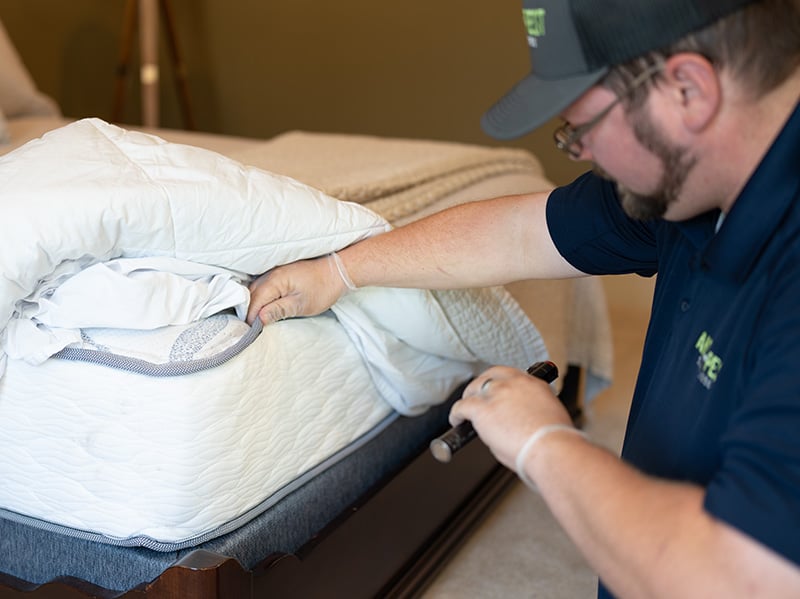How to Use HACCP for Hotel Pest Monitoring Effectively
Share
In the hospitality industry, maintaining a pristine and safe environment is crucial. Therefore, understanding how to use HACCP for hotel pest monitoring is imperative for hotel managers. This method not only ensures the safety and satisfaction of guests but also safeguards the hotel's reputation. By implementing HACCP principles, hotels can proactively manage pest issues, creating a healthier and more pleasant experience for everyone.

Understanding HACCP: A Brief Overview
HACCP, or Hazard Analysis and Critical Control Points, is a systematic approach primarily used in the food industry to identify, evaluate, and control hazards. Although traditionally applied to food safety, its principles are incredibly effective in pest monitoring within hotels. The goal is to prevent problems before they occur rather than reacting to them after the fact.
The Need for Pest Control in Hotels
Hotels are bustling environments, perfect for guests and unfortunately, pests. From rodents to insects, these unwanted visitors can quickly become a nuisance and a health hazard. To understand more about how to respond to pest sightings in hotels, check out this link. Implementing an effective pest control strategy is essential for maintaining hygiene and ensuring guest satisfaction.
Common Pests Found in Hotels
Hotels frequently encounter pests such as cockroaches, bedbugs, flies, and rodents. These pests can compromise hygiene, damage the property, and deter guests. Understanding the types of pests that may present themselves and using targeted strategies to guard against them is fundamental for effective pest control.
Implementing HACCP in Pest Monitoring
The HACCP approach can be adapted for pest control by following its seven principles:
1. Conduct a Hazard Analysis
Identify potential pest threats and assess the risk they pose to your hotel. This includes evaluating areas prone to pest activity, such as kitchens, laundry rooms, and storage areas.
2. Determine Critical Control Points (CCPs)
CCPs are specific locations where control measures can be applied to prevent or reduce pest infestation. Identifying these points allows hotel staff to focus their efforts on the most vulnerable areas.
3. Establish Critical Limits
Set acceptable levels for pest activities. For instance, one might establish a zero-tolerance policy for rodent sightings in the kitchen area.
4. Implement Monitoring Procedures
Develop procedures to regularly monitor for pest activity. This might include routine inspections and the use of pest detection devices. Learn how hotel risk assessments can assist in this process.
5. Establish Corrective Actions
Define actions to be taken when monitoring indicates a deviation from critical limits. This could include immediate pest control measures or additional staff training.
6. Implement Verification Procedures
Regularly assess the effectiveness of your pest monitoring program. This might include external audits or reviews of pest control records.
7. Maintain Documentation
Keep thorough records of all pest control activities, inspections, and corrective actions. This documentation is vital for tracking progress and demonstrating compliance with HACCP standards.
Benefits of Using HACCP for Pest Monitoring
By incorporating HACCP into your hotel's pest management strategy, you can significantly reduce pest-related issues. This approach promotes a proactive, rather than reactive, stance on pest control. It also supports regulatory compliance and enhances overall hotel hygiene. For additional insights into pest management, visit this resource.
Improved Guest Satisfaction
Guests in hotels with effective pest control measures enjoy a more pleasant stay, leading to positive reviews and repeat business. Consistent monitoring and proactive pest management ensure a clean and safe environment, aligning with guest expectations.
Cost Efficiency
While implementing HACCP may appear costly initially, it can save money in the long run by preventing costly infestations and maintaining a good reputation. Prevention is always more cost-effective than dealing with an infestation after it occurs.
Challenges in Applying HACCP to Pest Monitoring
Implementing HACCP in pest monitoring is not without challenges. Staff must be adequately trained, and consistent monitoring requires time and resources. However, with commitment and the right strategies, these challenges can be overcome, ensuring a pest-free hotel environment.
Staff Training
Training staff to recognize pest threats and understand HACCP principles is essential. This might involve regular workshops or incorporating pest management training into regular staff meetings. Explore how professional pest control services can assist in training and implementation.
Resource Allocation
Allocating sufficient resources to pest monitoring can be difficult, especially for smaller hotels. However, prioritizing pest control can prevent significant issues and maintain the hotels reputation.
Conclusion
Understanding how to use HACCP for hotel pest monitoring is essential for any hotel aiming to maintain high standards of hygiene and guest satisfaction. By implementing HACCP principles, hotels can effectively manage and prevent pest issues, ensuring a safe and enjoyable environment for all guests.

Frequently Asked Questions
1. What is HACCP in pest control?
HACCP stands for Hazard Analysis and Critical Control Points. In pest control, it involves identifying potential pest threats and implementing strategies to prevent and manage infestations.
2. Why is pest monitoring important in hotels?
Pest monitoring is crucial in hotels to maintain hygiene and ensure guest satisfaction. It helps prevent infestations that can damage the hotels reputation and drive away guests.
3. How can hotels benefit from HACCP?
By using HACCP, hotels can proactively manage pest issues, improve guest satisfaction, and ensure compliance with health and safety regulations.
